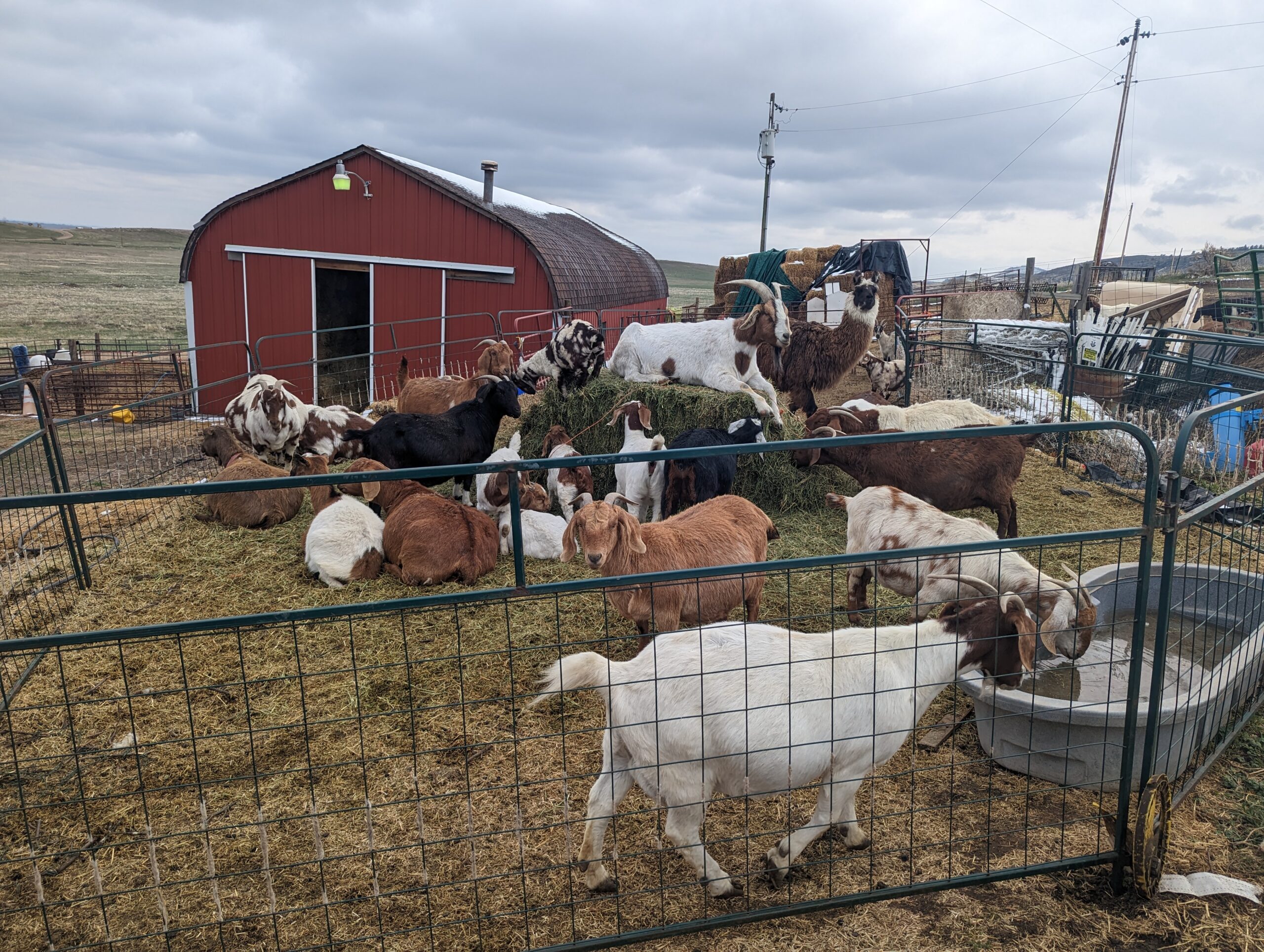
Mason Owens

Mason Owens
Tony and Vinny aren’t your typical mob bosses. First of all, they’re llamas, and all their underlings are goats. Also, the only things getting whacked by this mob are weeds.
The herd belongs to Emily McMurtrey of Mutton Mowers LLC, a Berthoud-based company that rents out its 75 goats and two llamas to remove unwanted or invasive vegetation from the landscape. The llamas protect the goats and keep them in line, earning the title of “mob boss” as McMurtrey affectionately calls them, while the goats do what they do best – eat.
McMurtrey’s clients include municipalities across Boulder County such as Boulder and Superior, where recent mitigation efforts have come in response to the devastating Marshall Fire that destroyed over 1,000 homes and damaged hundreds more across Boulder County in Dec. 2021. While municipalities and private landowners hire grazing services for a variety of purposes, some of the most important applications include wildfire mitigation and invasive plant management.
Mitigation efforts will only become more important as climate change continues to progress. Not only do the warmer, dryer conditions brought on by climate change make fires more frequent and more dangerous, but increases in the number of invasive plants such as cheatgrass can also provide wildfires with the opportunity to burn hotter, faster, and longer. Since goats will eat almost anything, including overgrown vegetation and noxious plants, allowing them to graze provides a natural method of combating these issues.
“They’re not the best solution in all cases,” McMurtrey said. “But overall, the thing that makes goats amazing for vegetation removal or fuels mitigation is their ability to give back to the land. And so they’re doing it in a natural way that provides input into the soil without taking everything away. And they can break things down.”
In other words, this is one rare instance where people actually might want animals pooping on their lawns.
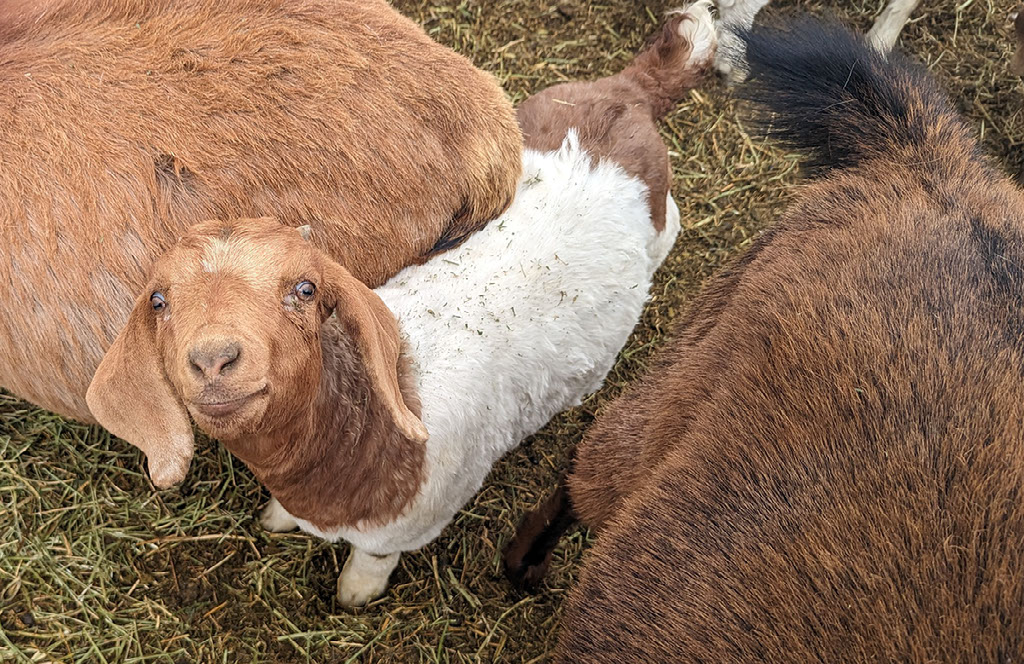
A model published by the First Street Foundation, a New York-based nonprofit that evaluates climate risk, predicts 83 percent of Colorado structures will have at least some risk of being affected by wildfires within the next 30 years. Also, a study published in the academic journal Global Change Biology claims that a 20 to 30 percent increase in invasive species could result in a massive loss in global biodiversity.
While herbicides and heavy machinery can efficiently remove these species, the methods tend to be expensive and rely on heavy machinery and chemicals that can further damage the environment. Goat grazing offers a natural alternative and could have a significant impact if employed on a large scale alongside other mitigation methods. In other words, goats just might be the new G.O.A.T.
Goat grazing as a mitigation strategy is a relatively new practice, with companies offering these services only emerging within the past few decades. Lani Malmburg became an early adopter of goat grazing when she started Goat Green in 1996 with her two sons, who were 11 and 12-years-old at the time. Today, her company has a herd of over 1,000 goats that do jobs all across the country.
“I did not want to go get a job that all of us with masters in weed science were slated to get,” Malmburg said. “I didn’t want to go sell chemicals for chemical companies or be the county weed person somewhere. I didn’t want to do that.”
“I wanted to stick to my values, which was to work outside, work with animals and keep my two sons with me,” she said. “And so I started this, and I made it up because I wanted to hold my values close to me.”
While there are a number of different animals that could be used for grazing, goats offer unique advantages over other critters like cows and sheep. They are smaller and more mobile than cattle and have an aptitude for climbing, which not only makes it easier to transport and employ them in higher numbers but also allows them to reach places that other animals cannot, including trees and cliffs.
“The goats can eat the entire fire fuel ladder, and they’re the only animal that can stand on their hind feet to reach it all,” Malmburg said, describing the ascending vegetation that allows fires to climb from the ground up to low tree branches and eventually into the tree canopy — hence the term “fuel ladder”.
“And they’re recycling it all in place and turning that unwanted foliage into pure organic fertilizer, and then they’re scattering it and trampling it in making the soils healthy, full of nutrients, and stabilizing the steep hillsides,” she said. “And that’s all done in one shot.”
In addition to their mobility, the goats’ hooves create marks in the ground that serve as a natural form of irrigation when combined with the nutrients they release back into the soil through waste. Because of this, Malmburg is able to offer land cultivation services in addition to vegetation removal by spreading seeds over the goat-fertilized land.
Perhaps the greatest tool at the goats’ disposal is their superior appetites and digestive systems. They not only eat a ton but will eat almost anything put in front of them including plants that would normally be poisonous to other species. In fact, they are able to eat three to four percent of their body weight per day.
Another advantage that their digestive system offers is that the goats do not pass viable seeds after eating the plants, which is particularly useful when dealing with invasive plants that would otherwise regrow. With teeth designed to chew through even the toughest of roughage, and a four-chambered stomach for the seeds to pass through, the goats are able to thoroughly break down the seeds by the time they are expelled as manure.
While the goats put their stomachs to use, they need their “mob bosses” to keep them in check and herd them effectively. McMurtrey uses her llamas for herding and protection while Malmburg opts to use herding dogs, a far more conventional option.
“One good dog and one person that knows what they’re doing can manage 1,200 goats,” Malmburg said.
While unconventional, McMurtrey remains satisfied with her llama mob bosses and believes they are the best fit for the urban spaces many of her jobs are in. Especially since some people might mistake a herding dog for a stray or neglected pet.
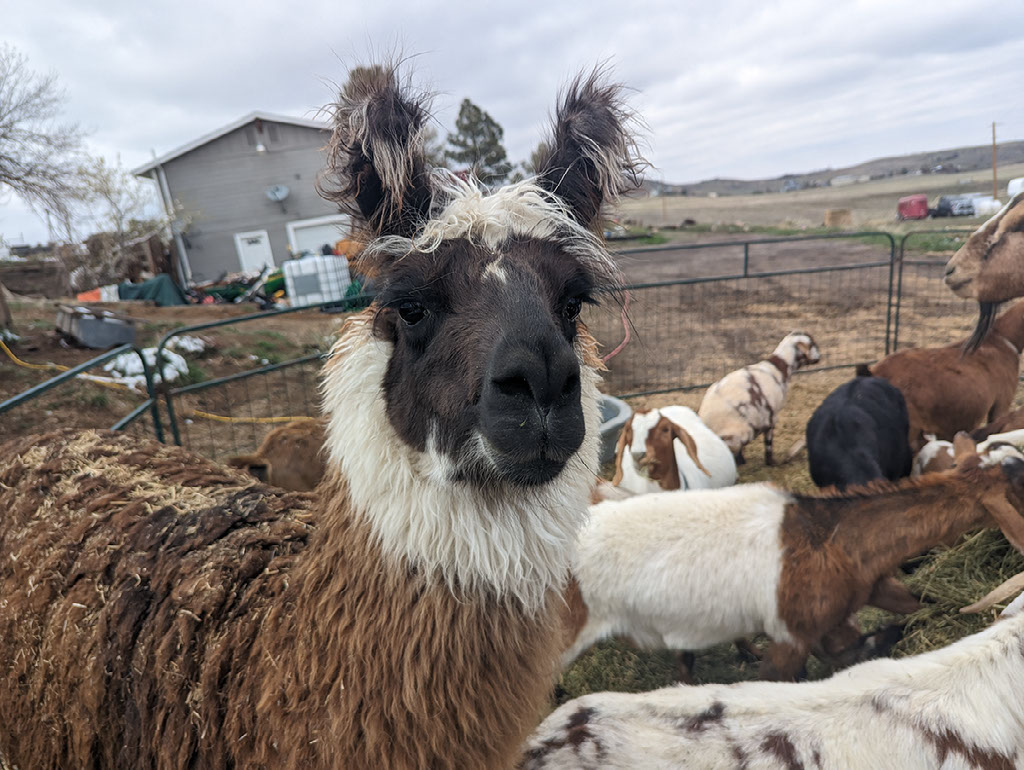
“Llamas were a much better fit for my operation,” McMurtrey said. “They’re kind of goofy looking which is something people really like. They’ll say ‘Wow, that’s something different.’”
“They enjoy the humming, which is the alert noise the llamas would make, and llamas are just kind of a figurehead for the business,” she said. “But they still provide a good service for my goats.”
Under the leadership of their furry mob bosses, the goats have the potential to be as effective as trained workers. According to both Malmburg and McMurtrey, the goats will take to training and retain that information over time, teaching their young how to operate within the herd and making the whole group easier to manage in the long run. Because of this, neither of the women slaughters their goats for meat, instead allowing them to age and build experience as grazers before teaching their young to do the same.
“That business model [slaughtering] did not work for me,” McMurtrey said. “I found that it was the personalities of my goats and the makeup of my herd that really made my business.”
Even though goats are particularly effective for grazing as a tool for wildfire and invasive plant mitigation, other animals such as cattle or sheep can also be used. Tim Seastedt, an ecologist in the Boulder area who studies these plant systems and invasives, actually prefers the use of mixed herds to get a variety of benefits.
“Cows ain’t gonna be the answer, goats won’t be the answer, sheep won’t be the answer, but actually mixing them, and timing them, and moving them correctly will be,” Seastedt said.
However, goats remain the hooven lawnmowers of choice for many, including Leslie Clark, the director of Parks, Recreation, and Open Space for the Town of Superior.
“Cattle grazing near residential areas isn’t always a great mix,” Clark said. “Goats are just more of our cup of tea, and cattle tend to need larger open space areas than what we have to offer.”
With the amount of work that goes into clearing out unwanted vegetation as a mitigation strategy, goats remain just one tool among many. However, grazing can have a significant impact in reducing the amount of human-based work needed to achieve results, and employing other strategies alongside grazers can further improve the outcomes.
A herd of goats can save human workers from a substantial amount of time-consuming physical labor. They can also penetrate dense, overgrown areas and hard-to-reach spaces much more effectively than humans can. It is much easier to have goats do their thing and then remove any material they missed than it is to have a team try to remove it all by hand.
“Weed mitigation is probably our number one thing that we do and a lot of that has to be done by hand with the use of volunteers, so you have to train people how to identify the weeds and set up volunteer efforts to do that,” Clark said. “Whereas the goats, they’ll just eat that stuff.”
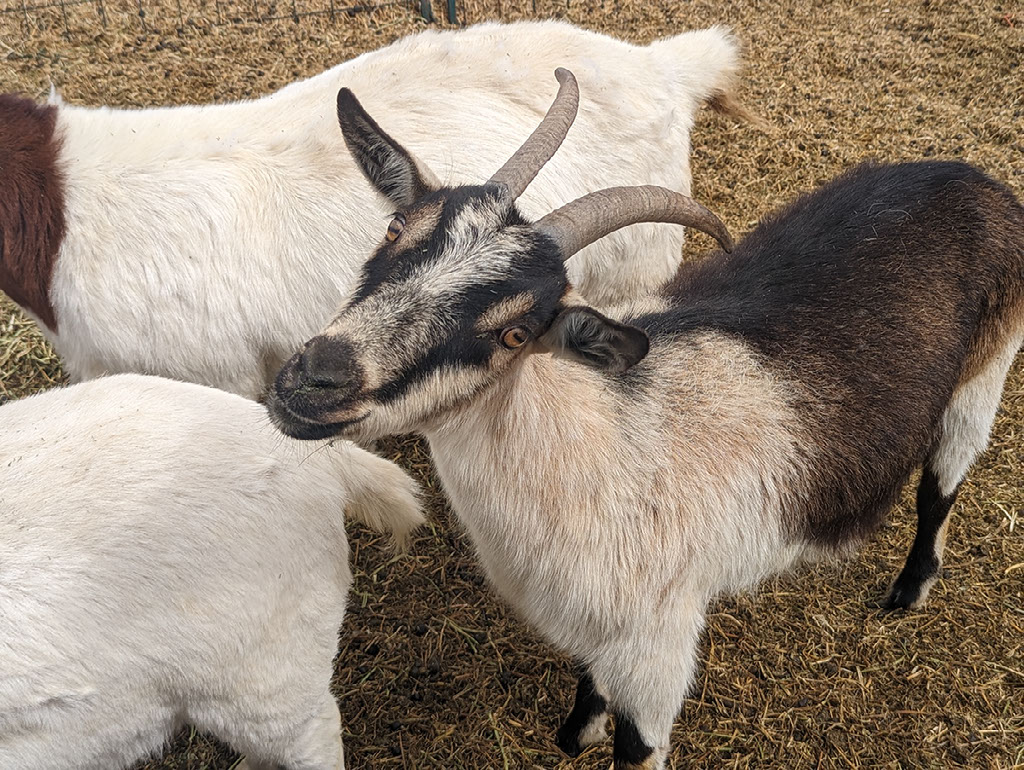
Mowing is another effective strategy for removing a large amount of vegetation in a timely manner and is one of, if not the most, popular alternatives to grazing. When dealing with a relatively small area, a mower is often more convenient than bringing in an entire herd.
“If you could just mow a plant like cheatgrass a couple of times, just when it was about to produce seeds, you can knock out its seed production and since it’s an annual plant that grows only from seed the next year, you reduce the seed bank and within three years you’ve pretty much gotten rid of the cheatgrass,” Seastedt said. “So you can do it but you know, it’s intense, labor intensive, and time-focused.”
Goats do offer some key advantages over their mechanical counterparts, however. There are many areas where bringing in large machinery is not a viable option due to the terrain, in which case the more mobile goats are a preferable option. Grazing is also less disruptive to any wildlife that may be in the area.
Herbicides offer yet another viable alternative for removing vegetation and can be particularly effective when targeting only certain spots or individual plants. Boulder County’s weed control supervisor Joe Swanson has found the herbicide Rejuvra to be particularly effective in recent years.
“Right now, I would say the herbicide is having the best effect that we have because it’s a one-time treatment, five to seven ounces,” Swanson said. “So that’s all we did eight years ago on some of our sites was that one treatment, and we’re still seeing the cheatgrass removed from sites.”
It is important to note that using herbicides on a large scale can have adverse impacts on the environment by introducing artificial and harmful chemicals into the soil, potentially creating more problems than it is solving if done haphazardly. Because of this, Seastedt remains skeptical of herbicides as a viable solution.
“The trouble with the ones they use on cheatgrass is actually that the preferred cheatgrass killer now prevents seed germination,” Seastedt said. “So they put it on and nothing can germinate the next year, which is wonderful except it leaves a brown spot if you’ve got nothing but cheatgrass, so now you have no vegetation on that spot whatsoever.”
Unlike herbicides and mowing — which are often powered by fossil fuels — grazing is unique in the sense that it is a completely natural solution that can remove vegetation without harming or introducing pollution into the ecosystem, hence the name of Malmburg’s company, “Goat Green”. In a world where climate change is worsening and having a direct impact on invasive species and wildfire risk, it is increasingly important to employ environmentally friendly solutions whenever possible, according to Malmburg.
“We can’t afford to be killing anything, and we can’t afford to be putting this stuff [chemicals] into our environment,” Malmburg said.
Just like with any other method, goat grazing does have some drawbacks. A major concern is that goats can be a little bit too good at their jobs. If allowed, they will keep munching until there’s nearly nothing left. To prevent overgrazing, the goats’ progress must be monitored and they should only be on the land for as long as is necessary to remove the unwanted foliage.
According to the World Wildlife Foundation, overgrazing can lead to significant harm to plant systems through erosion, compaction, and loss of nutrients, which can make it difficult for any future vegetation to grow.
Also, while the goats do eat everything, they know what they like and will go for that first. Meaning, it might take them some time to actually start eating the plants that are being targeted.
“One thing I learned early on about goats is that they have their ice cream list and they go through it,” Seastedt said. “They’ll clear out what tastes best first, but eventually they will eat everything. You’ve just got to leave them there long enough.”
The timing of when the goats are released is another major factor that needs to be taken into consideration. Especially when targeting invasive species, it is important to release the goats at a point in the plants’ growing process where the goats can digest the seeds and prevent the unwanted plant from spreading or regrowing, according to McMurtrey.
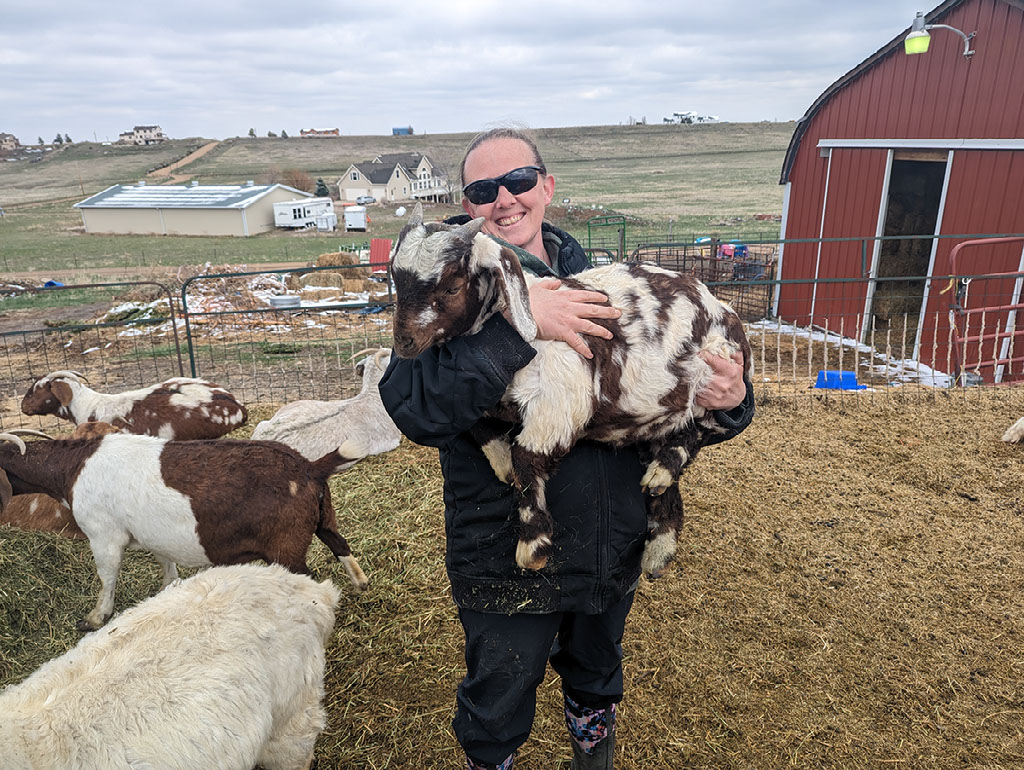
“Timing is everything, especially with invasive species management, which is what I get called in for most of the time,” McMurtrey said. “Because we’re looking at that thistle, or the whitetop or curly dock, or you name it, and you’re looking to do that before they go to flower or seed.”
There’s also a goat shortage. There are relatively few businesses that offer grazing services — and even fewer with large herds like Malmburg’s — compared to how many would be needed to have a significant impact on a greater scale.
“There needs to be 1,000 of us, running 1,000 goats each,” said Malmburg.“ I mean, look at the amount of fire mitigation that needs to be done. And sure we have 1,000 goats, but when you look at the Colorado mountains, boy, we’re not going to get very far in a month.”
It’s a tough business to get into.
Not only is the grazing business incredibly hard work, but raising, herding, keeping, and grazing goats are all learned skills that take time and dedication to master.
As an industry expert, Malmburg shares her knowledge and experience in hopes of encouraging more individuals to start grazing businesses. That is why she started the Goatapelli Foundation, a nonprofit group that provides education and training to those hoping to get into goat grazing.
In addition to the learning curve and dedication required, starting a herd has large start-up costs in the form of animals, land, and equipment. Also, once a grazing business is established, it takes time to build a herd with the temperament, training, and experience that makes the job much easier.
After all, even a single naughty goat is capable of wreaking havoc. Early into McMurtrey’s career, she once spent six hours chasing an escaped goat through a neighborhood — a goat on the lam, if you will. In many ways, dealing with goats can be like dealing with children.
“I consider myself a principal, and the goats are all my kids,” McMurtrey said.
Those who wish to hire grazers for fire mitigation and invasive plant management face challenges as well. For municipalities, it is often difficult for land managers to advocate for the resources necessary to actually hire grazers.
“It’s a challenge only because it’s not something that municipalities probably have budgeted for,” said Clark. “In the past, you might budget for mowing and trimming and doing regular landscape work on the more developed parts, but grazing is a relatively new method for land management, and so we are just now getting our budgets aligned so that we can fund that.”
Since mitigation is a preemptive measure, it becomes easy for individuals to ignore the issue until it becomes a visible problem. The Marshall Fire proved this, and a renewed focus on wildfire mitigation in its wake has led places like Louisville to look into goat grazing. However, efforts to educate the public on mitigation and grazing could cause more municipalities and private landowners alike to embrace the method without the need for another disaster.
McMurtrey believes strongly in the importance of educating people on these issues, and will occasionally hold “meet and bleat” events where she will visit communities with her animals in order to teach people about mitigation and spread awareness.
“More and more municipalities are embracing outside-of-the-box type of approaches to how do we handle these issues,” McMurtrey said. “And I think the more that people reach out and use those approaches and create these spaces for people like myself to come in, or at least have the opportunities to educate people, the more I am optimistic for the future.”